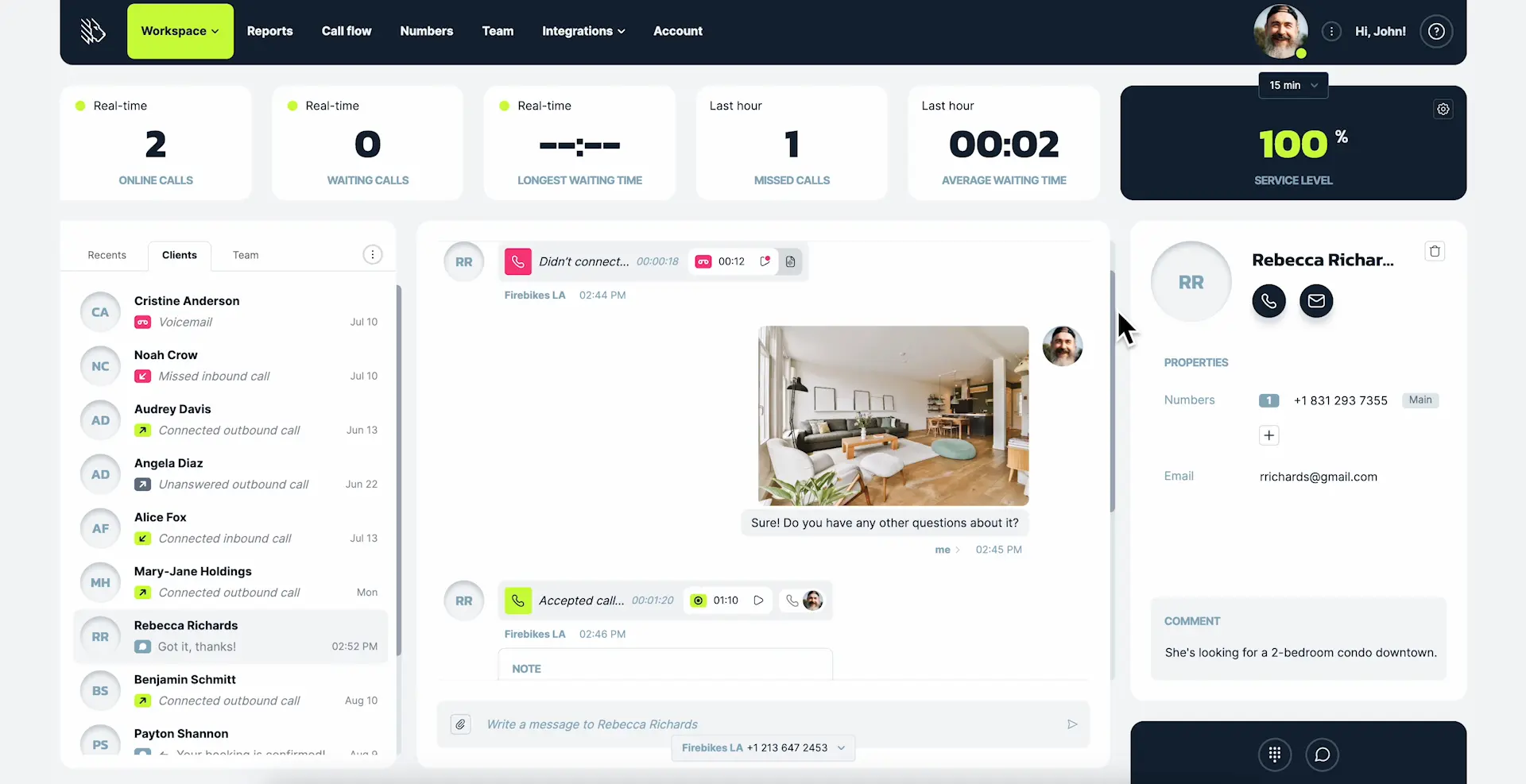How does a VoIP phone system work?
The seemingly complex technology behind VoIP phone solutions is easy once you really look into it. Here we will break down how VoIP works in simple terms using a structured approach:
1. Dialing the number
Just like traditional telephony, you begin by dialing the desired number. Unlike regular phone systems, VoIP doesn’t establish a specific physical path but prepares your voice for digital transformation, using Session Initiation Protocol (SIP) and VoIP ports, the underlying technology that initiates, maintains, and ends the call. Think of it as the backbone of a VoIP call.
2. Transformation to data
Using codecs (either software or hardware), your voice gets converted into digital packets, akin to stuffing your words into envelopes for a virtual postman.
3. Data packet transmission
These digitized packets get transported via IP, across Local Area Networks (LANs), or the internet. This transmission, typically facilitated by RTP (Real-Time Transport Protocol), the ‘bloodstream’ of the call, responsible for carrying the actual information (or data packets) from one device to another, or SRTP, however, is much faster than a postman delivering your messages – almost immediate.
4. Decoding at the destination
Upon reaching the destination, either via Ethernet or Wi-Fi, codecs come into play again, decoding and decompressing the data packets. It’s as if the receiver opens your envelopes and reads your messages, but using Transmission Control Protocol (TCP) and User Datagram Protocol (UDP). TCP is like the ‘nervous system’, detecting and correcting errors during the call, while UDP focuses on speed, ensuring faster VoIP transmission.
Now you can better appreciate the simplicity and sophistication of VoIP phone systems for business and how they make communication more efficient and cost-effective.


























